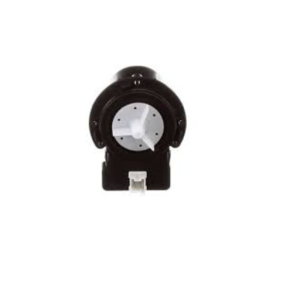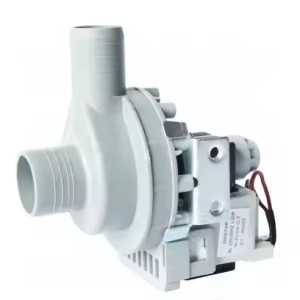WORLDWIDE SHIPPING via DHL | Free Shipping above 200aed in UAE | Free Samples | Exceptional offerings since 2010 PROJECTS CERTIFICATE & ACHIVEMENTS IMPORT & EXPORT
WORLDWIDE SHIPPING via DHL | Free Shipping above 200aed in UAE | Free Samples | Exceptional offerings since 2010 PROJECTS CERTIFICATE & ACHIVEMENTS IMPORT & EXPORT
A malfunctioning drain pump in a washing machine can disrupt your laundry routine, leaving you with waterlogged clothes or a machine that stops mid-cycle. Understanding the symptoms, diagnosing the problem, and knowing how to fix it can save you time and money. This blog covers everything you need to know about drain pump issues, from identifying the problem to preventive maintenance tips.
A faulty drain pump can manifest in several ways. One of the most common signs is the machine stopping mid-cycle, especially before the spin cycle begins. You might also notice that the pump doesn’t turn on at all, leaving the machine silent even when it should be draining. In some cases, the pump may run continuously, producing a constant humming sound, which indicates it’s struggling to function properly.
Slow drainage is another red flag. If water takes 10-15 minutes to drain instead of the usual 2-3 minutes, the pump could be clogged or failing. Intermittent draining, where the machine drains water inconsistently, is also a sign of pump trouble. Additionally, modern washing machines often display error codes that can help identify drainage issues. Decoding these error messages can point directly to the pump or other drainage components.

A faulty drain pump can manifest in several ways. One of the most common signs is the machine stopping mid-cycle, especially before the spin cycle begins. You might also notice that the pump doesn’t turn on at all, leaving the machine silent even when it should be draining. In some cases, the pump may run continuously, producing a constant humming sound, which indicates it’s struggling to function properly.
Slow drainage is another red flag. If water takes 10-15 minutes to drain instead of the usual 2-3 minutes, the pump could be clogged or failing. Intermittent draining, where the machine drains water inconsistently, is also a sign of pump trouble. Additionally, modern washing machines often display error codes that can help identify drainage issues. Decoding these error messages can point directly to the pump or other drainage components.
Before jumping to conclusions, it’s essential to diagnose the issue systematically. Start by checking the machine’s settings. Ensure the spin cycle is enabled and the correct number of revolutions is set. Some washing programs, like delicate or wool cycles, exclude the spin mode, which might mistakenly appear as a drainage problem.
Next, inspect the drain hose. Make sure it’s not bent, pinched, or clogged. A blocked hose can mimic pump failure. To rule out sewer blockages, disconnect the hose from the sewer and drain water into a basin or toilet. If water flows freely, the issue lies elsewhere.
The garbage filter is another common culprit. Open the technical hatch, unscrew the filter, and clean it of debris. While cleaning, inspect the impeller for obstructions like hair, threads, or small objects. If the impeller is blocked, the pump won’t function correctly. Finally, test the pump by starting the spin cycle and observing if the impeller moves. If it remains still, the pump is likely faulty.
The location of the drain pump varies depending on the washing machine brand. For brands like Samsung, LG, Whirlpool, and Beko, the pump is accessible through the bottom panel. To reach it, disconnect the machine from power and water, drain any remaining water, and lay the machine on its side.
For Zanussi and Electrolux machines, the pump is located behind the rear panel. Simply disconnect the machine, turn it around, and remove the back cover to access the pump. Brands like Bosch, Siemens, and AEG hide the pump behind the front panel, requiring partial disassembly of the machine. This involves removing the top cover, detergent tray, and control panel to reach the pump.

One of the most frequent issues is leakage. If your washing machine is leaking from the bottom, the pump housing or volute might be damaged. Inspect the drain pipe for cracks, blockages, or loose connections. Cleaning or replacing the hose can often resolve the issue. If the problem persists, the pump itself may need replacement.
Another common problem is the pump running continuously or not turning on at all. This often points to a faulty control board or pressure switch. The control board may fail to send the correct signals to the pump, while a broken pressure switch can misreport water levels, causing the pump to run idle or not start. Testing these components with a multimeter can help identify the issue.
Clogged impellers are also a frequent cause of pump failure. Debris like hair, threads, or small objects can block the impeller, preventing it from spinning. Regular cleaning of the garbage filter and impeller can prevent this problem.
A malfunctioning drain pump can be frustrating, but with the right knowledge, you can diagnose and resolve the issue efficiently. Regular maintenance, proper usage, and timely repairs can extend the life of your washing machine’s drain pump. If you’re in Coimbatore and need professional assistance, reach out to a trusted service center for reliable repairs and maintenance.